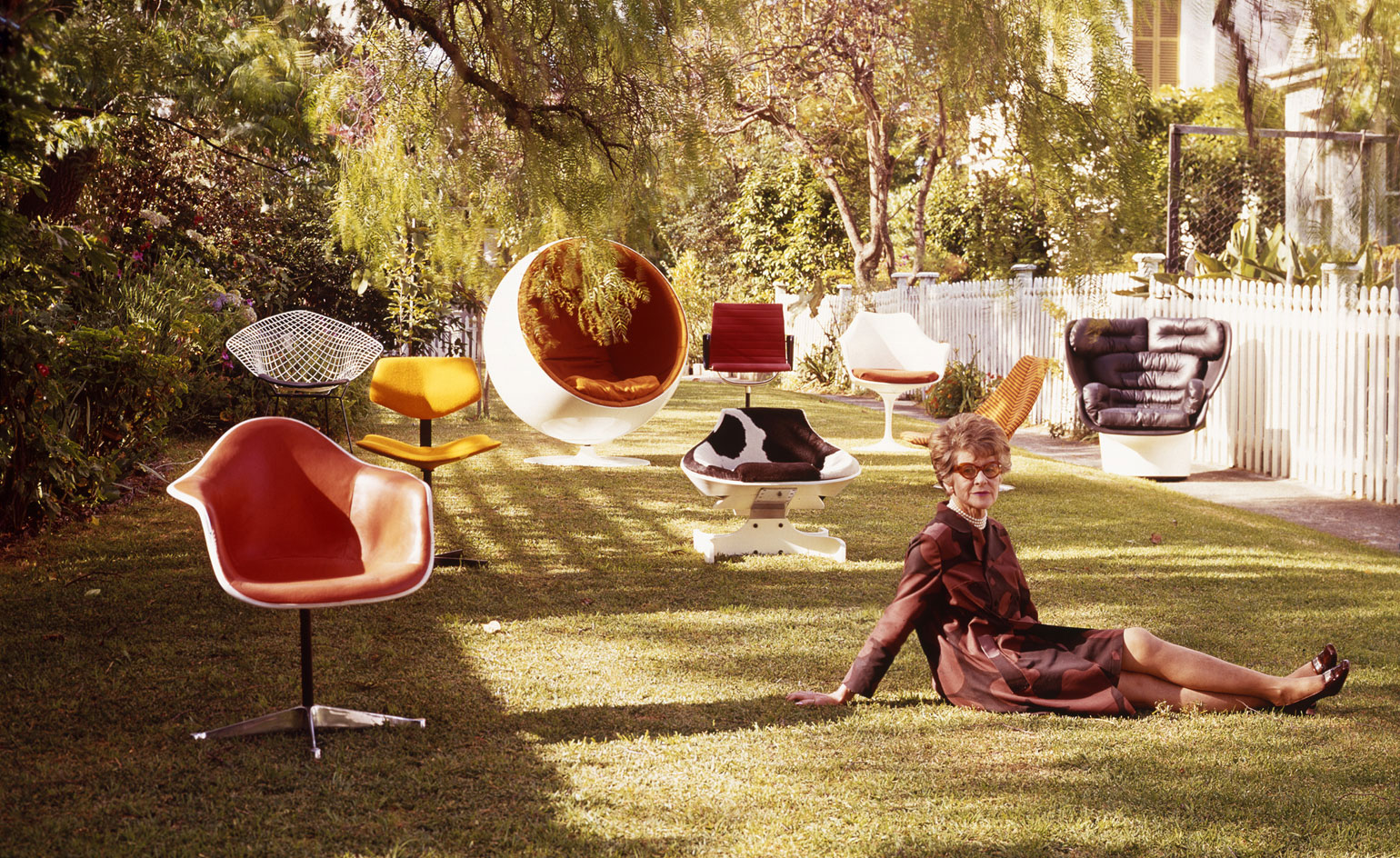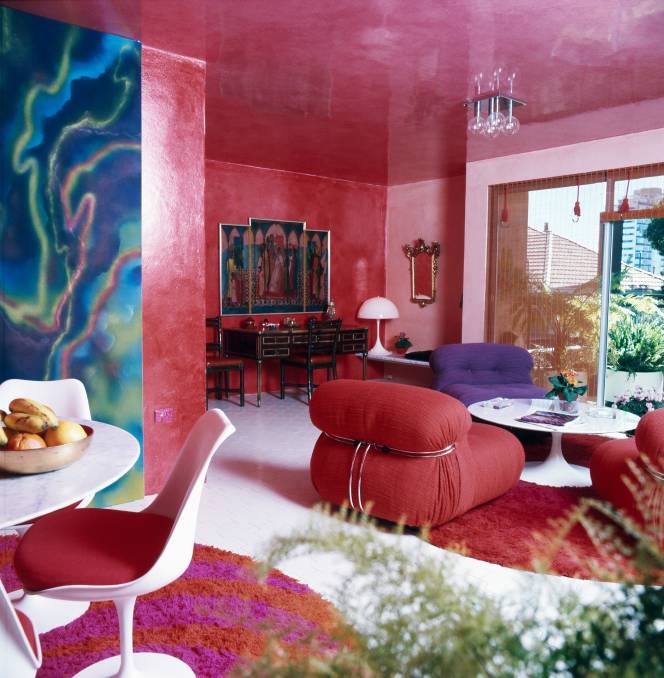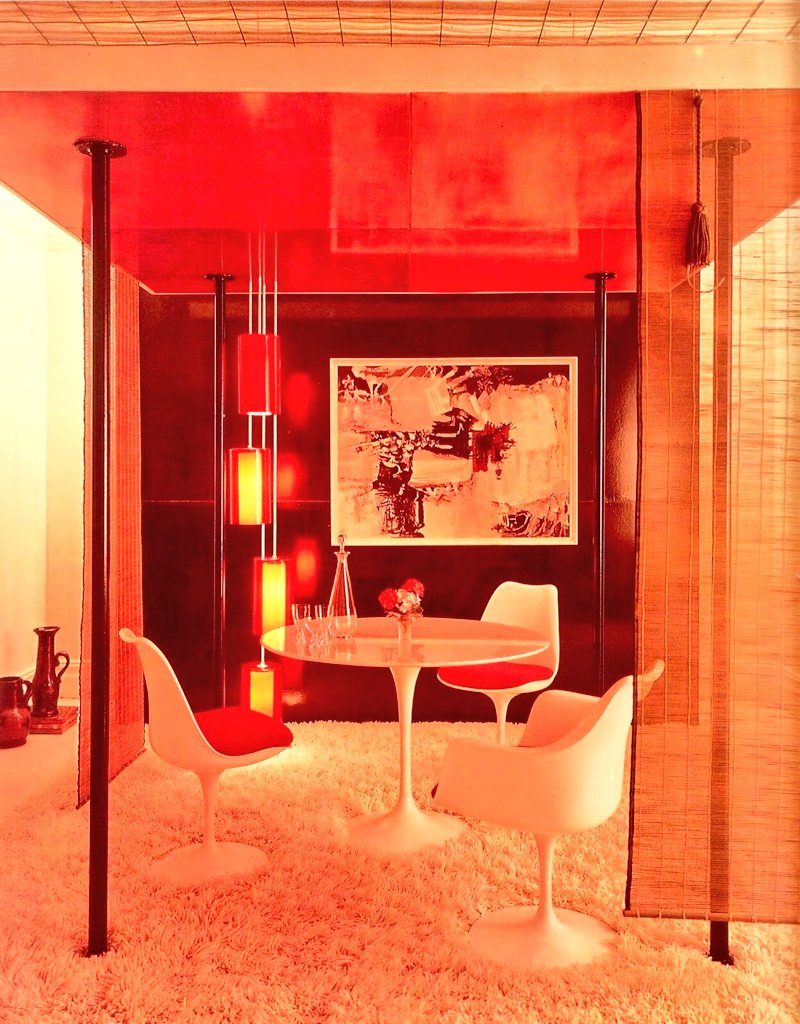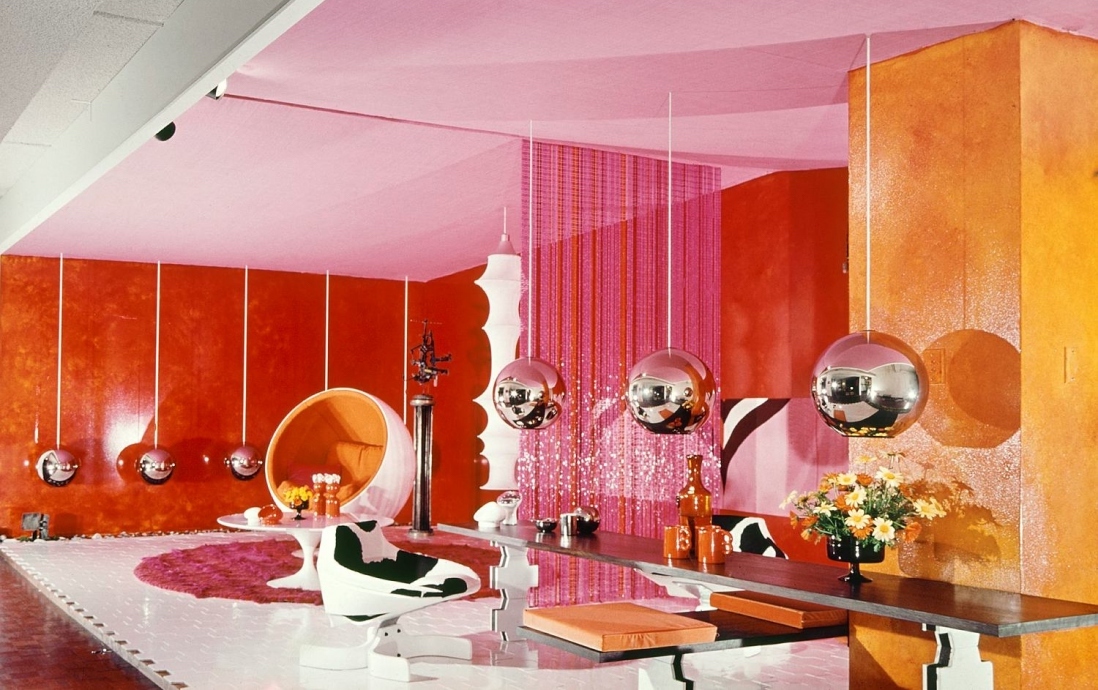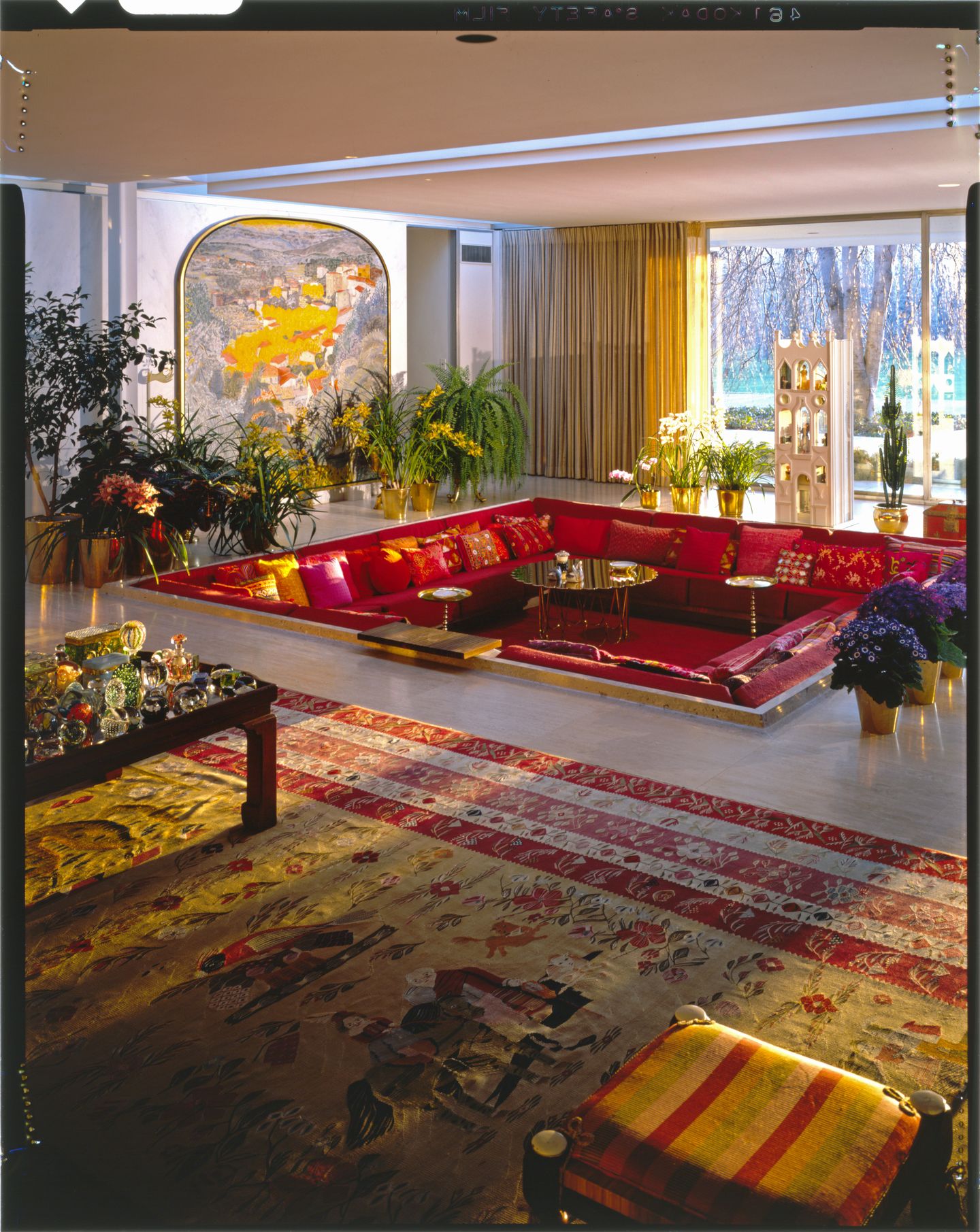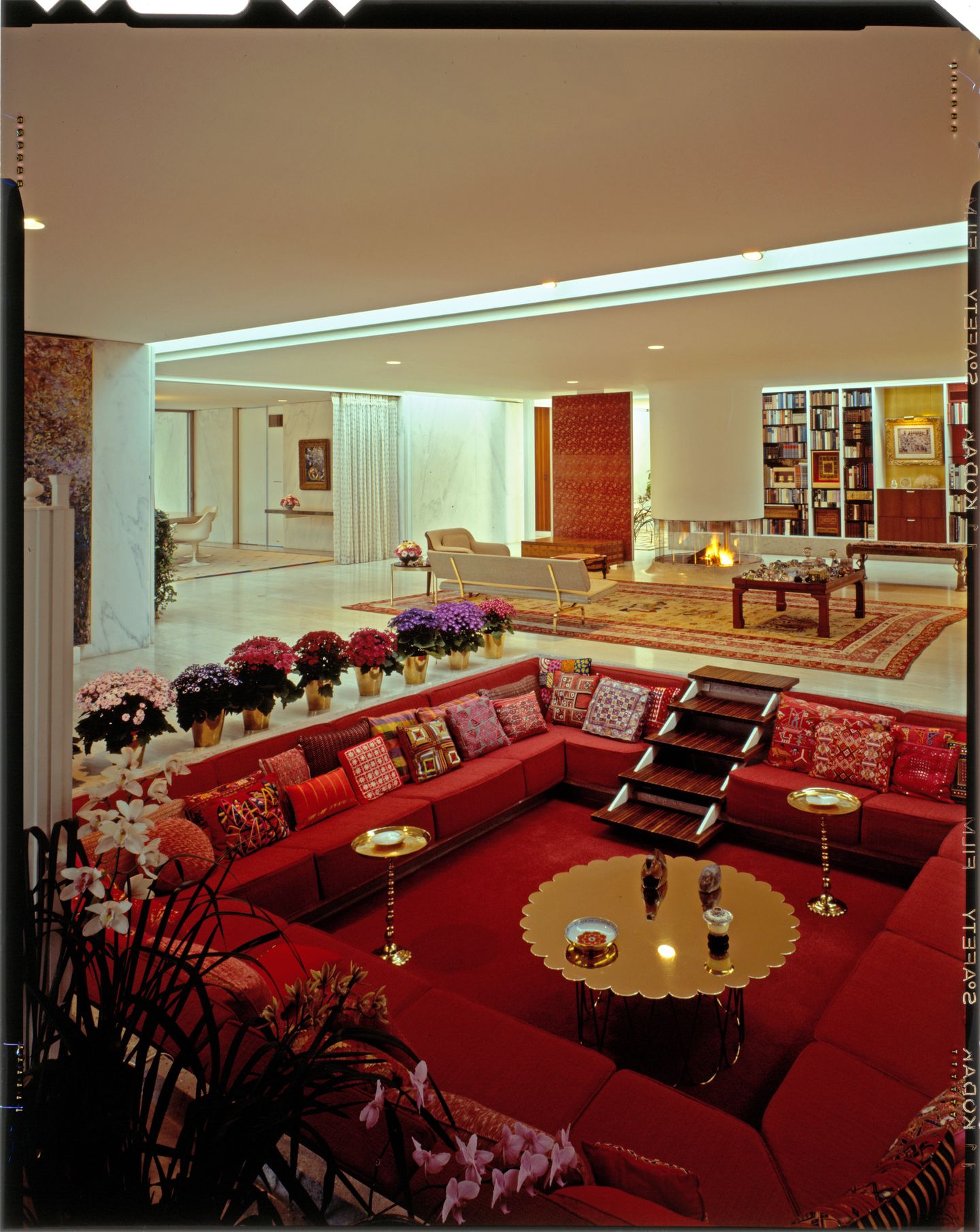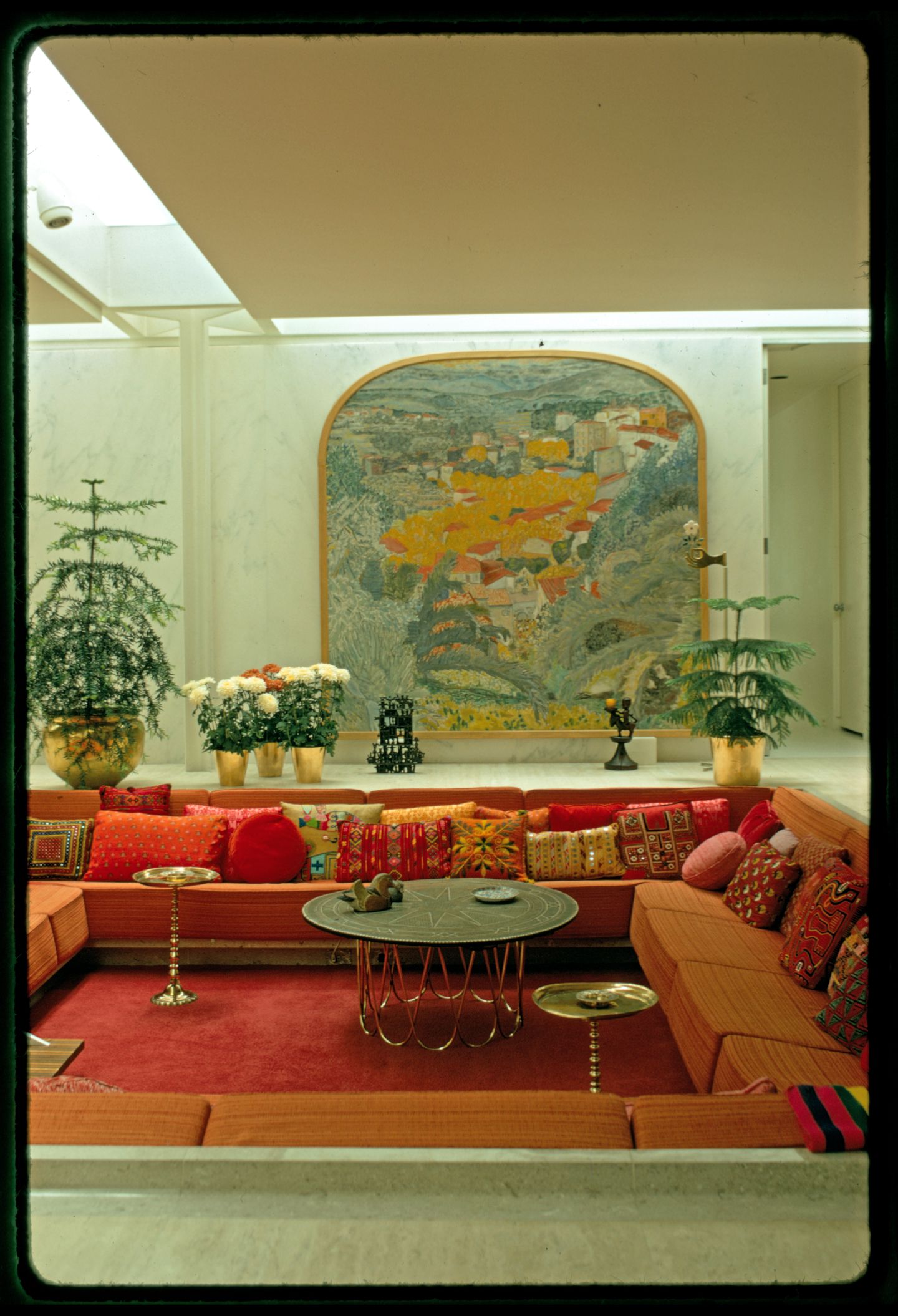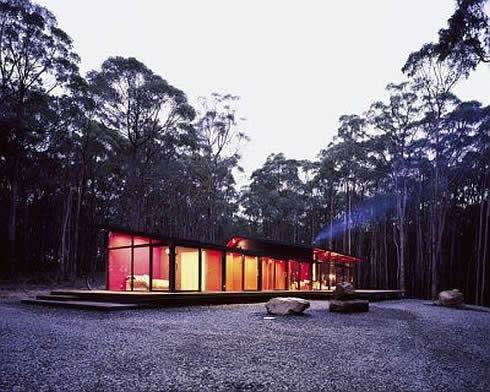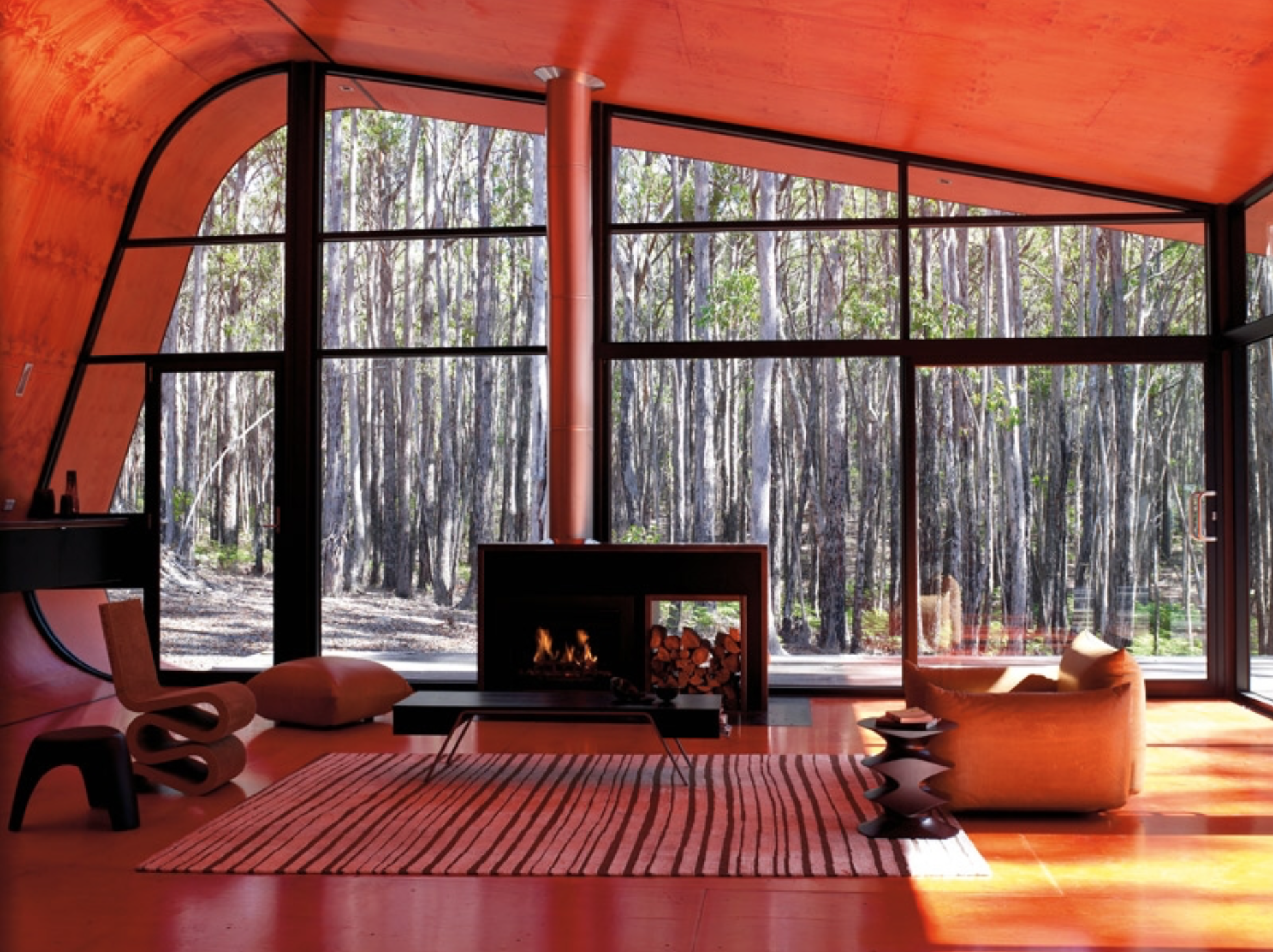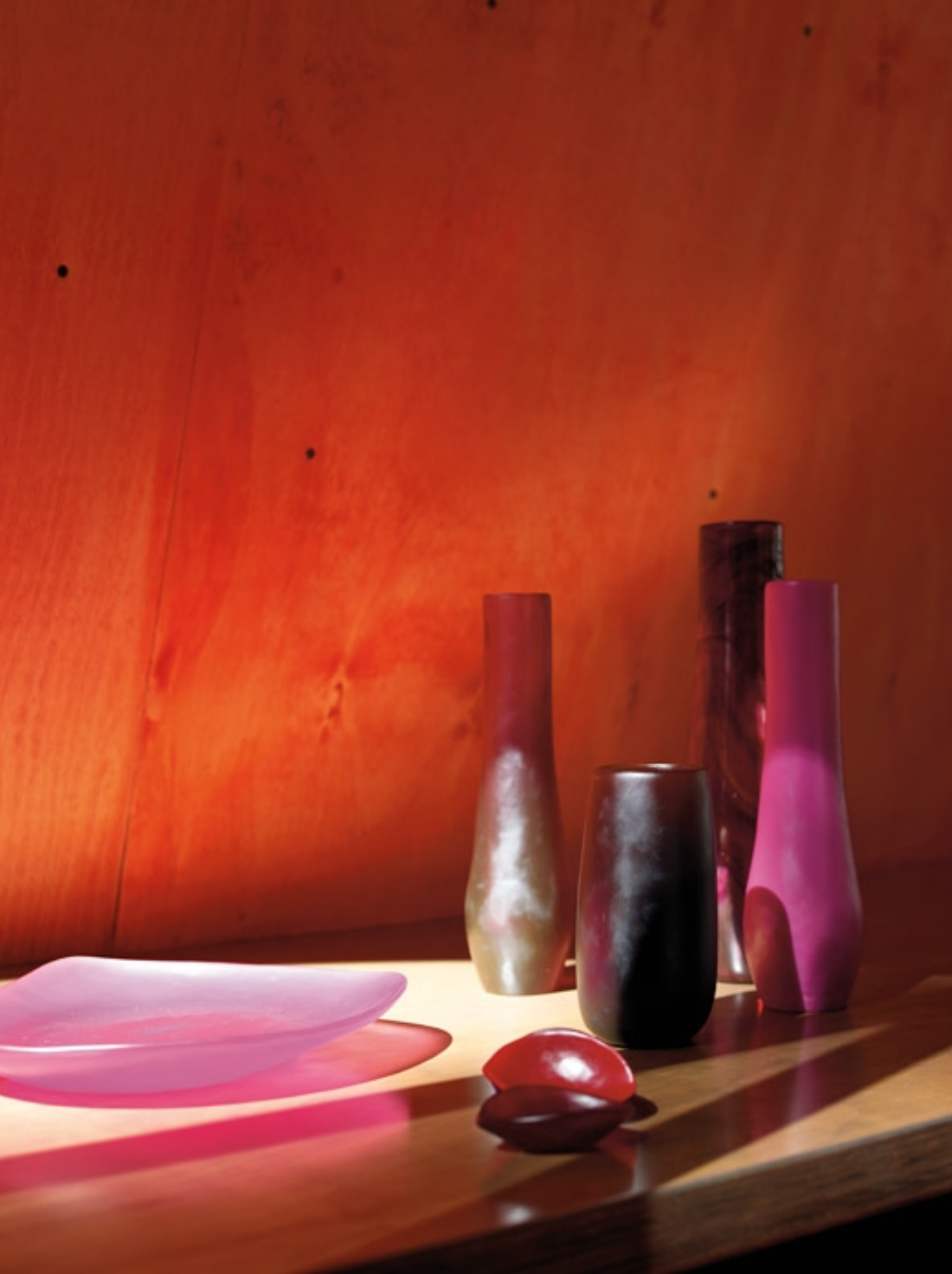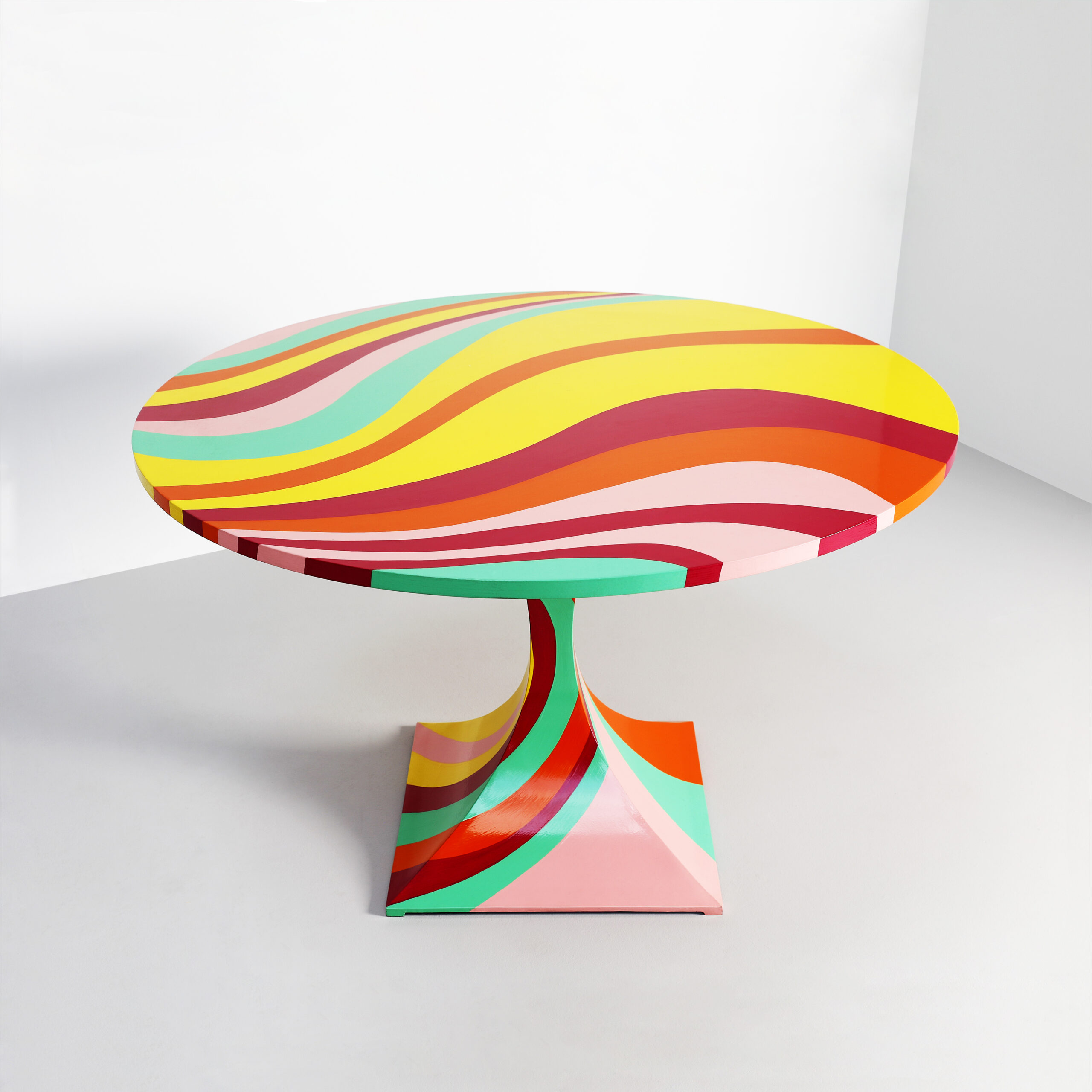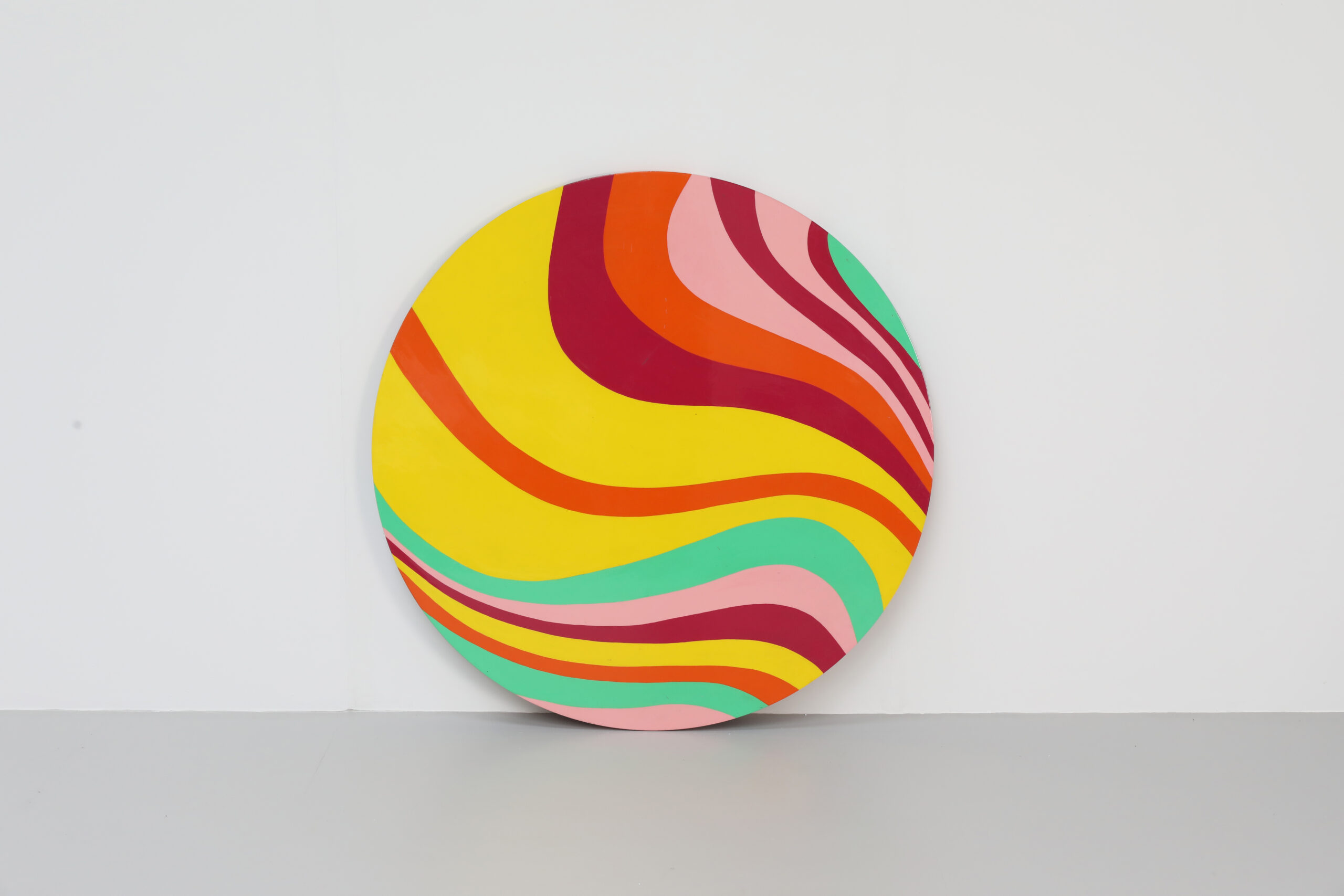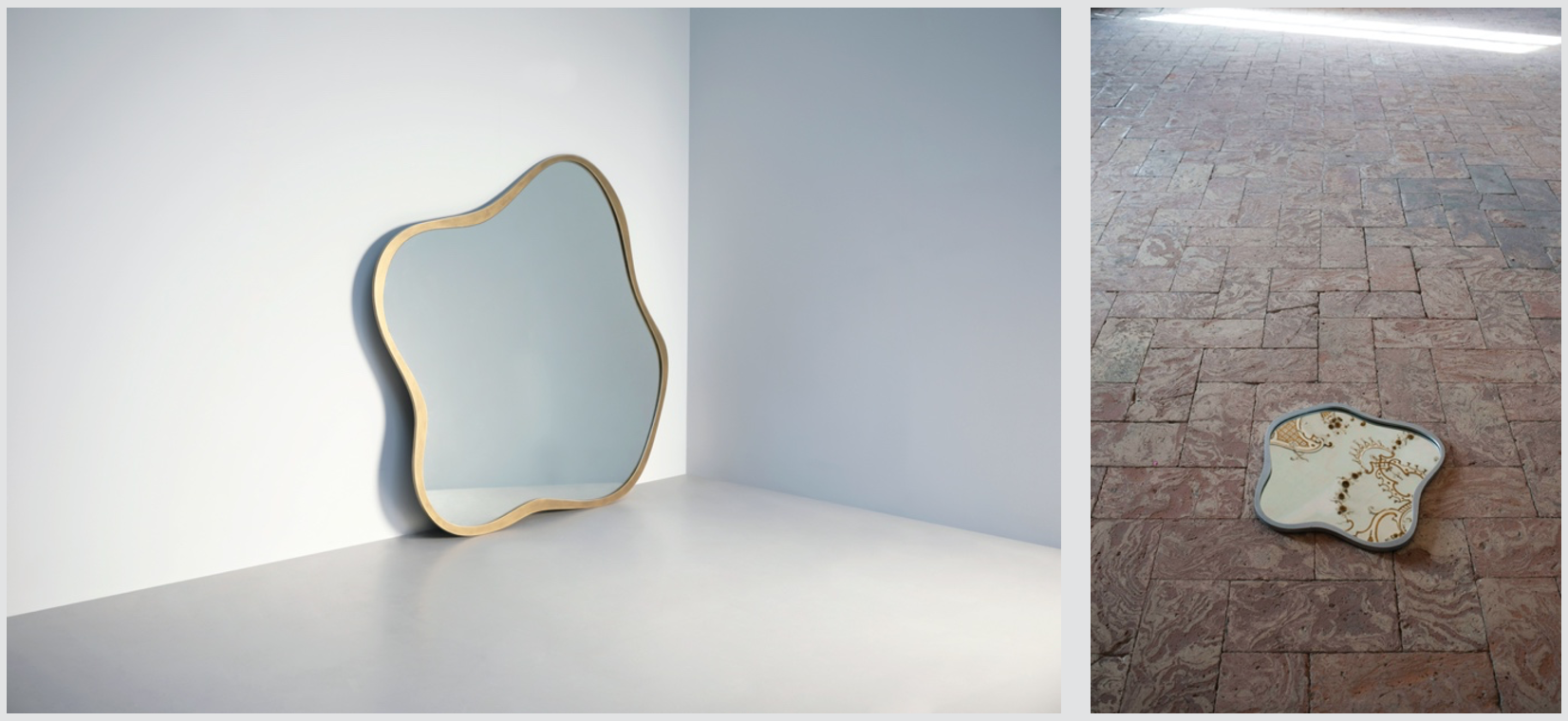The psychedelic movement kicked off in the mid-60’s, delivering a bewildering dose of colour, illusionistic pattern, and intoxicating materiality. It took hold in the music industry, art, fashion, and design, sending ripples through the zeitgeist of the era. The echoes of this pivotal moment are felt today, with a major flower-power-fuelled resurgence taking shape in contemporary culture. The psychedelic spaces of the 60’s are not only bold, immersive works of design, but intriguing time capsules of a passionate sensibility. The ethos of the time is peppered through more recent works of design, carrying with it that same freewheeling, optimistic whimsicality.
Marion Hall Best’s Interiors
Marion Hall Best leaves us several spectacular examples of psychedelia’s permeation into the domestic sphere. She was a true trailblazer of Australian design, bringing the Modern manifesto and aesthetic to the fore in her country, and leaving her own uniquely chimerical stamp on the design world at large. Her work is touched by fresh, playful combinations of colour and material. She masterfully mixes bold elements to compose interiors that are at once arrestingly audacious and fluidly cohesive. Perhaps it’s the pronounced exuberance of every object in the room that brings her environments together.
Hall Best propagated her cutting-edge creativity by establishing her own shops, which stocked local designs as well as imported pieces from further afield. She started with a storefront in Woollahra in 1939 that eventually served as an emporium for this new wave of Modernism taking form in Europe and beyond. It proved to be a portal into the future of Australian design, as well as a display of Hall Best’s own daringly forward-facing taste. She later extended her influence to Sydney, opening a shop in Rowe Street, a design-led enclave which creatives frequented for inspiration. Here she stocked the technicolour flower-printed textiles of Marimekko, the optical wallcoverings of Follot, and the amorphous light sculptures of Isamu Noguchi.
Hall Best’s unique brand of spellbinding interior design spread like wildfire, blazing a trail through Europe and brushing against some of the most culturally pivotal figures of the moment. In 1967 she designed a room for Mary Quant, replete with warmly coloured, texturally transfixing surfaces. She brought in now iconic European furniture pieces like Eero Aarnio’s ‘Ball Chair’ and Eero Saarinen’s ‘Tulip Table’. She topped it off with enough disco-esque balls to put Studio 54 to shame. The end result is nothing short of intoxicating, hurling inhabitants down a rabbit hole of classic Marion Hall Best wonder.
The Conversation Pit at the Miller House by Eero Saarinen & Alexander Girard
The Miller House is one of the many wonders which has helped establish Columbus, Indiana as an American capital of design. The 1957 project is Eero Saarinen and Alexander Girard’s decidedly fresh take on what a home could be – and at its heart is the conversation pit. For enthusiasts of the sunken seating area, this modern marvel is arguably the pinnacle. Its plush red inner sanctum invites guests to linger into the wee hours over drinks and discussion. The classic Saarinen red and white colour combination of the room creates a divide between streamlined quotidian life and this alternative epicurean den. It’s immersive by design, replete with tactile elements of a warm colour tone that create a sense of closeness and cohesion. The complementarily diverse arrangement of throw pillows exudes a free-spirited sense of adventure and beckons to those on the outside of this secret sunken party.
The scene is punctuated by splashes of metallic furniture polished to golden, mirror-like reflectivity. They sprout up from their bases like flowers reaching for the sun, mimicking the vanguard of potted plants marking the perimeter. They’re set against all manner of material, from plush carpeting, to wooden steps, to embroidered textiles, to optical delights suspended in orbs of glass. It’s an eclectic scene for all the senses, luring visitors in and encouraging them to stay a while and indulge in the infinite expanse of the present moment. Very psychedelic, indeed.
Wheatsheaf House by Jesse Judd
Australian architect, Jesse Judd designed Wheatsheaf House as an immersive retreat for his family circa 2009. The pod-like house sits within a eucalyptus grove in the hinterlands of Victoria, holding court among the towering trees. It was once a horse stable dating to 1830; though, it’s since taken form as a caravan of curiosities and a world unto itself. The intentionally hovercraft-like design protects passengers from the more unsavoury fauna of the Australian wild and creates a futuristic feel. The warm, vibrant colours of the home set it apart from its brooding environment, sequestering its inhabitants away in a psychedelic spaceship. “Tomato sauce was how I described what I wanted to the colourist”, Judd explains. It’s all very surreal.
Light plays a central role in animating this domain of molten forms and gooey-rich hues. The rhythm of the sun permeates the semi-glass structure, stirring up a dance of shadows and reflections. The furnishing adds to the atmosphere with the geometric quality of Jacques Herzog and Pierre de Meuron’s ‘Hocker Stool’ and the meandering form of Frank Gehry’s ‘Wiggle Chair’. The overall effect is discombobulation in the best of ways, carving out space for physical and psychological solitude in this beautifully immersive domain.
Tom Faulkner’s Special Edition Capricorn Table + Lily Mirror
Tom Faulkner’s designs are invariably led by a sense of ingenuity, tapping into the forms of nature and the movements which inform our culture at large. Though, his special edition Capricorn Table presented the opportunity to let the imagination run especially free. This technicoloured take on the classic shape draws visitors into its wavy display of rainbow striations. The finish is tempered by a classic, exacting form which brings the piece back down to earth as a functional place to convene.
Tom’s Lily Mirror focuses on form to convey a meandering sense of fluidity. It’s a jewel of a piece that delivers just the right amount of whimsy, reined in by the clean craftsmanship of its slightly irregular yet strikingly fine lines. There is a palpable sense of materiality emerging where the mirror meets the metalwork. The product is a piece that is at once minimalist and emphatically eye-catching.
Psychedelic design is the distillation of the creative exuberance which flows from a mind free of fetters. It stands separate from the carefully considered, simplicity-driven lines of Modernity, yet it instrumentalises those aesthetic contributions. It sets itself apart from stylistically traditional designs through a refreshed ingenuity in combining materials, though it relies on rich, texturally diverse displays of haptic delights. Its application of deep, warm colours is distinctly bold, though it relents just shy of Maximalism. Psychedelia hurdles full tilt into design only to meet it at a fine-tuned, considered point of balance which produces a sense of wonder that stays stolid through the ages. What’s left is a time capsule of a moment where freedom of form reflects freedom of thought and an ebullient conception of new frontiers for living.
Text by Annabel Colterjohn
